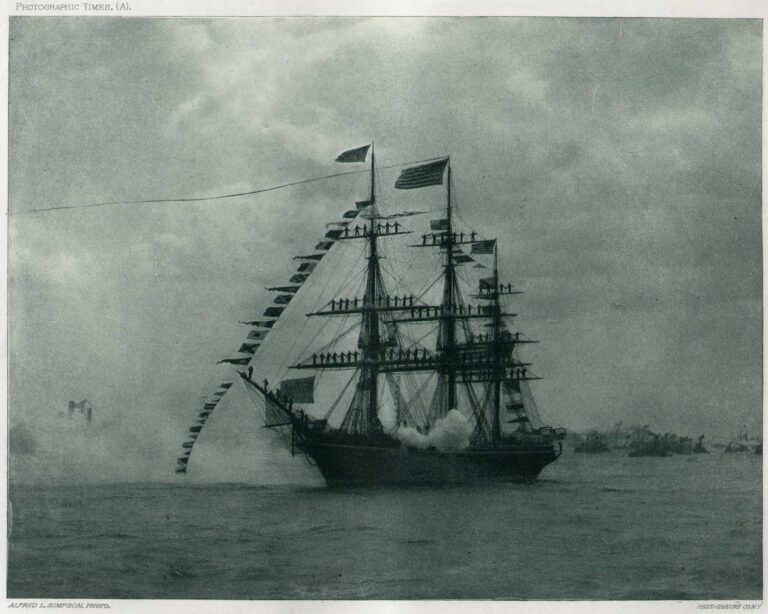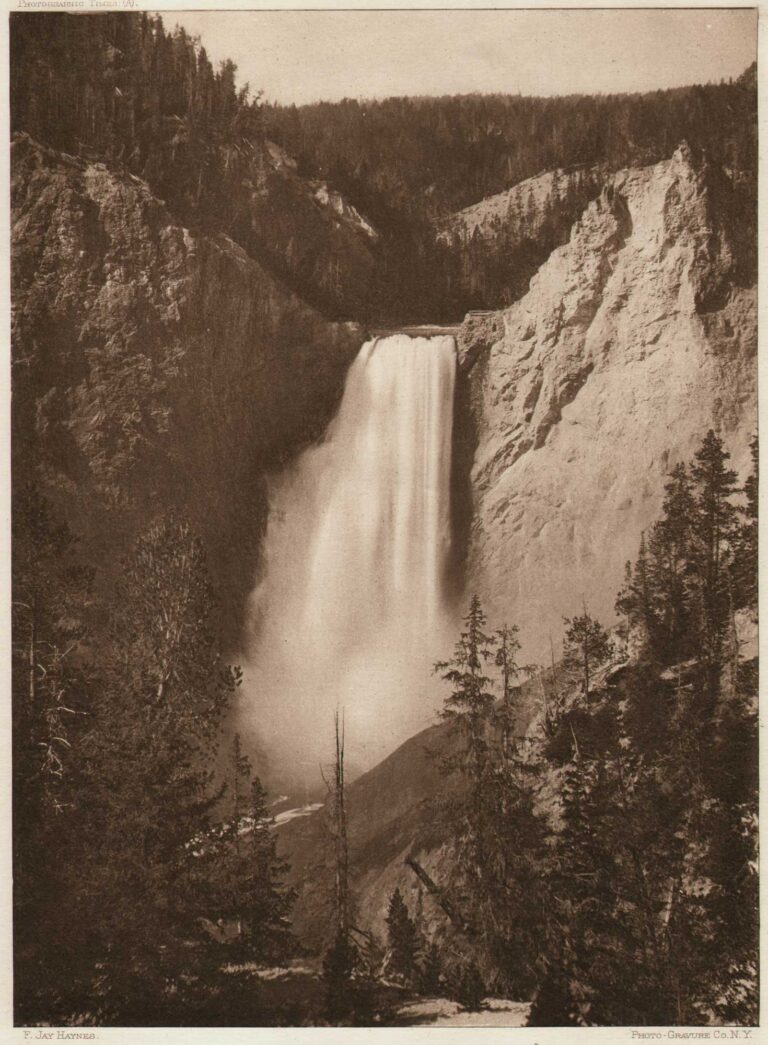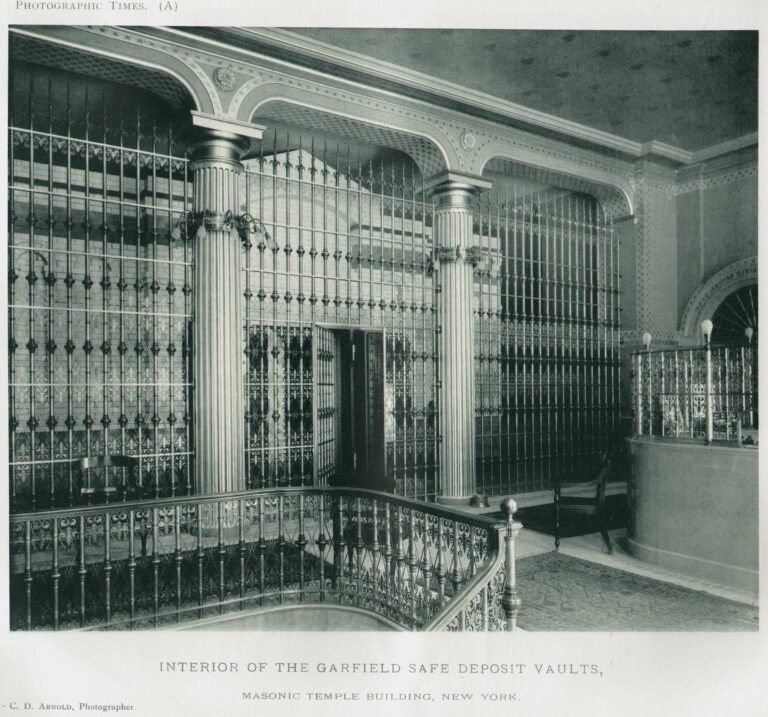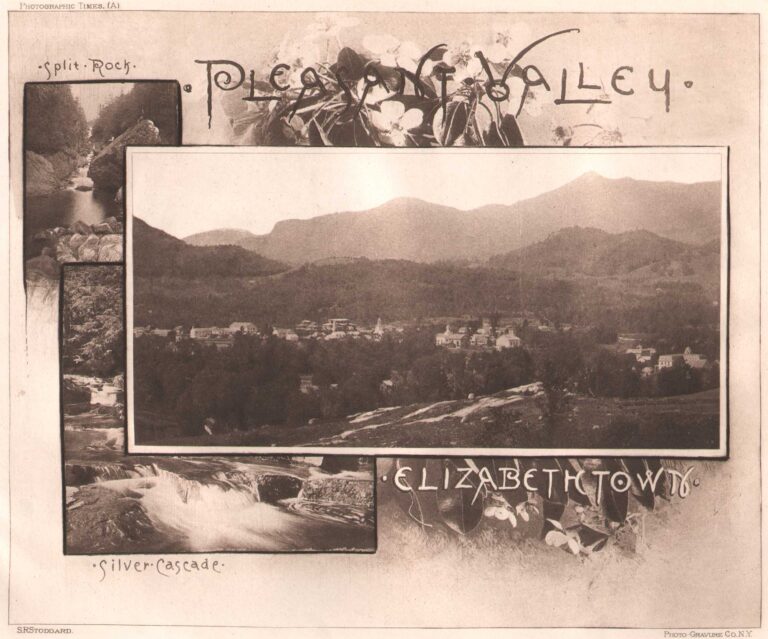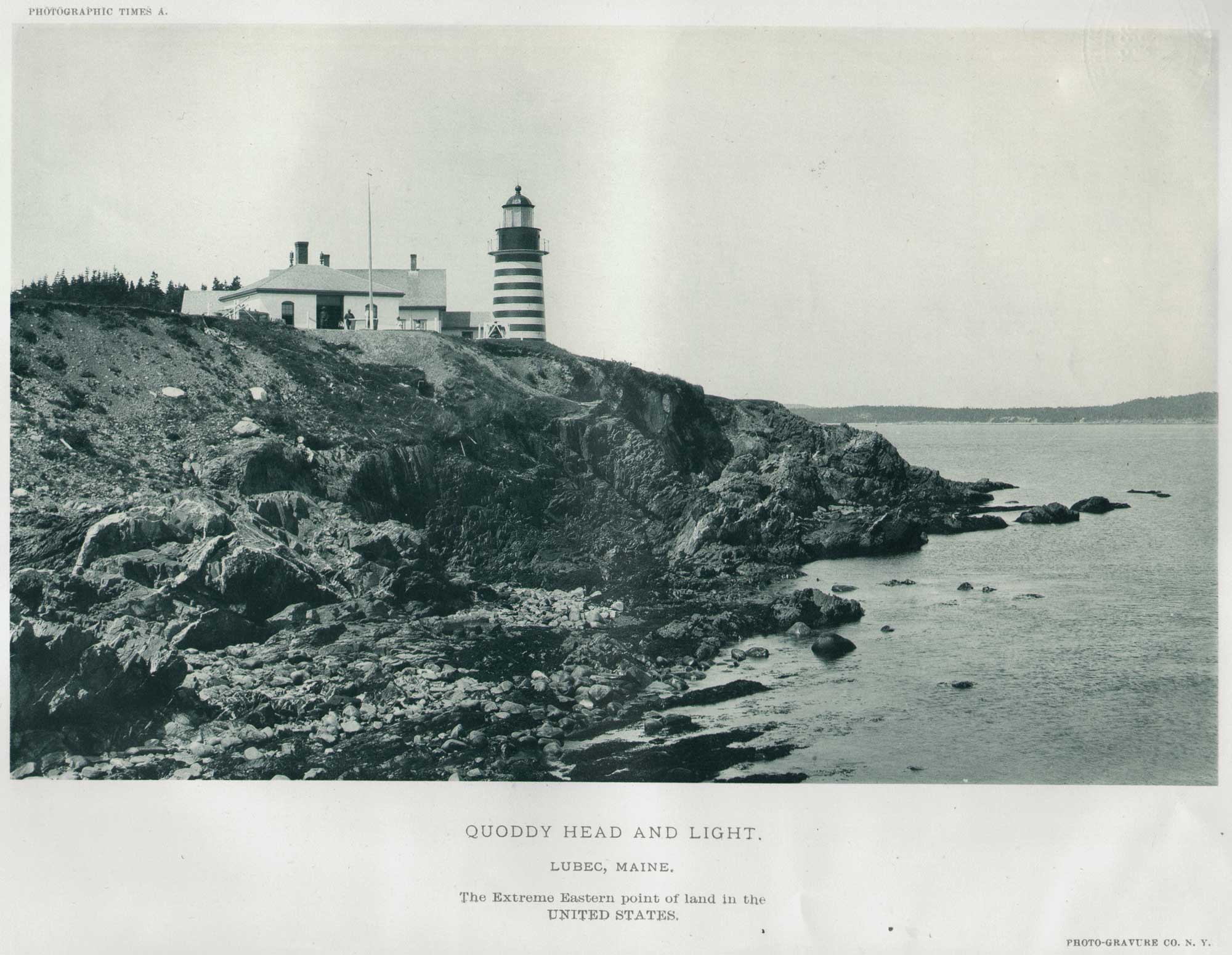
Quoddy Head and Light | Lubec, Maine
Editorial Comment for this plate:
“QUODDY HEAD.”
AS THE sub-title on our pictorial supplement of this week states, Quoddy Head, near Lubec, Maine, is the extreme eastern point of land in the United States. As such, it is very interesting; but, apart from this fact, the picture is an excellent specimen of landscape photography at its best. The negative was made by Mr. Henry G. Peabody, dealer in amateur photographic supplies at Boston, Mass., and is one of a series which he made on Allen & Rowell’s “stripping” plates, to illustrate a subscription book on “Main Coast Scenery.” This attractive publication contains about fifty 8×10 photo-gravures from Mr. Peabody’s negatives, with literary contributions by the poet Whittier, Celia Thaxter, Arlo Bates, Mrs. Chandler, and others. Mr. Peabody writes as follows of the interesting locality:
“Quoddy Head,” the extreme easterly apex of the United States, is a bold, rocky promontory, jutting out into the waters of the Bay of Fundy. The last thirty miles of coast, before reaching the “Head” present one succession of grand and imposing headlands, gray and desolate, continually swept by the swift tidal currents for which Fundy’s waters are noted. Upon a broad level plateau, considerably lower than the highest elevation of the “Head” stands West Quoddy Light, its picturesque Balmoral tower, alternately striped in red and white, presenting a very striking appearance as one approaches from seaward.
In the distance is seen the beautiful island of Campobello, while directly opposite the “Head,” and nine miles out in the Bay of Fundy, come the vast cliffs of Grand Manan, presenting an unbroken stretch of perpendicular wall, twenty miles in length, and from 300 to 400 feet in height.” Our reproduction is made by Mr. Edwards’ excellent photo-gelatine process. (p. 315)
